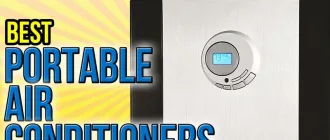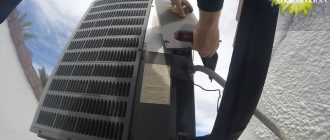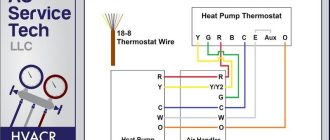Spotting and Addressing Goodman Furnace Control Failures
If you own a Goodman furnace, you may run into some common issues with the control board. The control board is the brain of your furnace, and it plays a vital role in the proper operation of the unit. However, it can develop problems over time, leading to issues such as no lights or malfunctioning circuit board.
Goodman circuit board problems can range from minor glitches to more serious malfunctions. Some signs that you may be experiencing circuit board problems include a lack of heat, inconsistent heating, or strange noises coming from the furnace. If you notice any of these signs, it’s important to address the issue promptly to avoid further damage.
Goodman furnace control board no lights is a common issue that many Goodman furnace owners face. When the control board fails, it may not send the signal to the furnace to ignite, resulting in no heat and no lights on the control board. This can be frustrating, especially during the colder months.
Goodman control board troubleshooting involves identifying the root cause of the problem and taking appropriate steps to fix it. One common troubleshooting step is to check for any loose or damaged wires connected to the control board. In some cases, a simple reset or reboot of the system can also solve the issue.
“If you are not comfortable with troubleshooting or if the issue persists, it is recommended to seek professional assistance. A qualified technician can diagnose the problem accurately and provide the necessary repairs or replacements.”
Remember, it’s important to address control board issues as soon as possible to prevent further damage to your Goodman furnace. By being proactive and following the correct troubleshooting steps, you can have your furnace up and running efficiently again in no time.
Common signs
If you suspect a Goodman furnace control failure, there are several common signs to look out for. These signs can help you identify the issue and take necessary steps to fix it.
1. No operation: If your Goodman furnace control board is not functioning properly, one of the most obvious signs is that the furnace is not operating at all. You might notice no response when you try to adjust the temperature or turn on the heat.
2. Erratic behavior: Another common sign of Goodman circuit board problems is when the furnace behaves erratically. This could include the furnace turning on and off randomly, the blower fan running continuously, or the thermostat not maintaining a consistent temperature.
3. No lights on the control board: If you notice that there are no lights on the Goodman furnace control board, it is likely a sign of a failure. The absence of lights indicates that power is not reaching the control board or that the board itself is not functioning properly.
If you experience any of these common signs, it is recommended to seek professional assistance to diagnose and fix the Goodman furnace control failure. A certified technician will be able to accurately identify the problem and provide the necessary repairs or replacements to get your furnace running smoothly again.
Tools needed
To identify and fix Goodman furnace control failures, you will need the following tools:
- Multimeter: A multimeter is essential for testing electrical connections and measuring voltage and resistance. It will help you diagnose goodman circuit board problems and determine if the control board is operating correctly.
- Screwdriver set: You will need a screwdriver set with various sizes and types of screwdrivers to remove panels or access the control board. This will allow you to inspect the goodman furnace control board for any visible issues or loose connections.
- Wire cutters/strippers: Wire cutters and strippers are useful for removing insulation from wires and cutting them to the appropriate length. This will be necessary if you need to replace any damaged wires or make new connections on the control board.
- Electrical tape: Electrical tape is used to insulate and protect electrical connections. If you find any exposed wires or loose connections, you can use electrical tape to secure them and prevent any further issues.
- Cleaning supplies: It’s important to keep the control board and its components clean to ensure proper functioning. You may need some cleaning supplies like a soft brush, compressed air, and electronics cleaner to remove any dust or debris that might be affecting the control board’s performance.
With these tools, you will be well-equipped to troubleshoot and fix Goodman furnace control board issues, such as goodman furnace control board no lights or other troubleshooting problems.
Safety precautions
When dealing with Goodman furnace control failures or goodman circuit board problems, it is important to follow proper safety precautions to avoid any accidents or injuries. Here are some safety measures to keep in mind:
- Always turn off the power: Before inspecting or attempting any repairs on the furnace control board, make sure to turn off the power supply to the unit. This will help prevent the risk of electrical shock.
- Wear protective gear: It is recommended to wear gloves, safety glasses, and other appropriate protective gear when working with the furnace control board. This will protect you from any potential hazards or harmful substances.
- Be cautious of sharp edges: The furnace control board may have sharp edges or components. Take care to avoid any cuts or injuries by handling it with caution.
- Keep the area well-ventilated: Make sure to work in a well-ventilated area to prevent the buildup of any harmful gases or fumes that may be emitted from the furnace.
- Follow manufacturer instructions: Always refer to the manufacturer’s instructions and guidelines when troubleshooting or repairing the furnace control board. This will ensure that you are following the correct procedures and using the appropriate tools.
- Consult a professional if unsure: If you are unsure about any aspect of troubleshooting or repairing the furnace control board, it is best to consult a professional technician. They have the knowledge and expertise to handle the situation safely and effectively.
By following these safety precautions, you can minimize the risk of accidents and ensure your safety when dealing with goodman furnace control failure or goodman furnace control board no lights.
Step 1: Inspect the control board
One of the most common issues with a Goodman furnace is a control board failure. If your furnace is not working and you notice that there are no lights on the Goodman furnace control board, it is likely that the control board has failed.
To fix this issue, the first step is to inspect the control board for any visible problems. Look for any burnt or damaged components, loose connections, or signs of moisture or corrosion. Make sure to turn off the power to the furnace before inspecting the control board.
If you find any issues with the control board, such as burnt components or loose connections, you may need to replace it. However, before doing so, it is recommended to consult a professional HVAC technician to accurately diagnose and fix the problem.
In some cases, the control board failure may be caused by other circuit board problems, such as a faulty thermostat or a power supply issue. It is important to thoroughly inspect the control board and other components to identify and rectify any underlying issues.
By inspecting the control board and addressing any problems, you can potentially resolve the Goodman furnace control failure and restore the proper functioning of your furnace.
Step 2: Check for loose connections
One common cause of goodman furnace control failure is loose connections. Over time, the vibrations and movement from the furnace can cause the wiring connections to become loose, resulting in intermittent or complete loss of control.
To troubleshoot this issue, follow these steps:
- Start by turning off the power to the furnace by flipping the switch on the circuit breaker.
- Locate the control board, which is usually found in the furnace’s blower compartment.
- Gently inspect the wiring connections on the control board, looking for any signs of looseness or disconnection.
- If you find any loose connections, use a screwdriver or pliers to tighten or reconnect them as necessary.
- Once all the connections have been checked and tightened, restore power to the furnace by flipping the switch on the circuit breaker.
- Test the furnace to see if the control issue has been resolved. If not, proceed to the next step.
By checking for loose connections and ensuring that all wiring is securely connected, you can often resolve goodman furnace control board problems and prevent further failures. However, if the issue persists, it may be necessary to consult a professional for further troubleshooting and repair.
Step 3: Test the flame sensor
After checking the goodman control board troubleshooting and ruling out any Goodman furnace control failures or Goodman circuit board problems, the next step in diagnosing your furnace issue is to test the flame sensor.
The flame sensor is an essential component of your Goodman furnace that detects the presence of a flame. If the flame sensor is dirty or faulty, it can cause the furnace to malfunction and potentially shut down unexpectedly.
Here’s how to test the flame sensor:
| 1 | Ensure the power to the furnace is off before proceeding with the test. |
| 2 | Locate the flame sensor, which is typically located in the burner assembly. |
| 3 | Remove the flame sensor from the furnace by unscrewing it from the burner assembly. |
| 4 | Inspect the flame sensor for any dirt, debris, or corrosion. If it appears dirty or corroded, clean it using a soft cloth or fine-grit sandpaper. |
| 5 | Once the flame sensor is clean, reinsert it into the burner assembly and tighten the screws to secure it in place. |
| 6 | Turn on the power to the furnace and observe its operation. If the furnace ignites and stays lit, the flame sensor is working correctly. If the flame sensor does not detect the flame or the furnace shuts down shortly after igniting, you may need to replace the flame sensor. |
Testing the flame sensor is a critical step in troubleshooting and diagnosing Goodman furnace issues. If you’re unsure or uncomfortable performing this test yourself, it’s recommended to contact a qualified HVAC technician to ensure accurate diagnosis and proper repair.
Step 4: Clean or replace the flame sensor
If you have determined that the goodman furnace control board has no lights or you are experiencing goodman furnace control failure, it is possible that the issue lies with the flame sensor. The flame sensor is responsible for detecting the presence of a flame and ensuring that the furnace continues to operate safely and efficiently.
To clean the flame sensor, you will need to first turn off the power to the furnace. Locate the flame sensor, which is typically a metallic rod located near the burners. Carefully remove the sensor from its housing, being careful not to damage or bend it.
Using a soft, clean cloth or fine-grit sandpaper, gently clean the sensor to remove any dirt, debris, or carbon buildup. Be sure to clean both the tip of the sensor and the area where it connects to the furnace. Once clean, reinsert the sensor into its housing.
If cleaning the flame sensor does not resolve the issue, it may be necessary to replace the sensor. Contact a professional HVAC technician or refer to your furnace’s manual for instructions on how to replace the flame sensor.
Remember, goodman furnace circuit board problems can often be resolved by cleaning or replacing the flame sensor. Regular maintenance and cleaning of the sensor can help keep your furnace running smoothly and prevent unexpected failures.
Step 5: Test the pressure switch
After checking the control board for any failures or issues, the next step in troubleshooting Goodman furnace control failures is to test the pressure switch. The pressure switch is an important component that ensures proper airflow in the furnace by monitoring the pressure inside the system.
To test the pressure switch, follow these steps:
- Turn off the power to the furnace.
- Locate the pressure switch, which is usually attached to the blower housing or near the inducer motor.
- Disconnect the wires from the pressure switch.
- Using a multimeter, set it to the ohm setting.
- With the multimeter probes, touch the terminals of the pressure switch. You should see a reading close to zero ohms.
- If the reading is significantly different from zero ohms, the pressure switch may be faulty and needs to be replaced.
Testing the pressure switch will help identify if it is functioning correctly and if it is a probable cause of the Goodman furnace control failure. If the pressure switch is determined to be faulty, it is recommended to contact a professional technician to replace it to prevent further issues.
Remember that proper troubleshooting of Goodman control board problems requires knowledge and caution. If you are unsure or uncomfortable performing any of these steps, it is best to consult a professional HVAC technician for assistance.
Step 6: Test the limit switch
Another potential cause of Goodman furnace control failures is a malfunctioning limit switch. The limit switch is a safety feature designed to shut off the furnace if it detects an overheating condition. If the limit switch is faulty, it may not allow the furnace to turn on or it may shut off the furnace prematurely.
To test the limit switch, you will need a multimeter. Start by turning off the power to the furnace. Locate the limit switch, which is usually located near the blower motor. Remove the wires connected to the limit switch, making sure to note their positions for reassembly.
Set your multimeter to the “ohms” or “resistance” setting. Touch the probes of the multimeter to the terminals on the limit switch. A properly functioning limit switch should show continuity, meaning the multimeter will display a low resistance reading. If the multimeter shows an open circuit or a high resistance reading, it indicates a faulty limit switch.
If the limit switch is faulty, it will need to be replaced. Contact a qualified HVAC technician or refer to the manufacturer’s instructions for information on how to replace the limit switch. Remember to always turn off the power before performing any repairs or replacements.
Testing and replacing the limit switch can help resolve Goodman furnace control board problems and aid in troubleshooting the control board.
Step 7: Check the ignitor
Another potential cause of a Goodman furnace control failure is a malfunctioning ignitor. The ignitor is responsible for lighting the gas in the furnace, allowing it to produce heat. If the ignitor is faulty or not working properly, it can cause the furnace control board to have no lights or display error codes.
To check the ignitor, you will need to access the furnace’s burner compartment. Start by turning off the power to the furnace and removing the burner access panel. Locate the ignitor, which is typically a small, rectangular or round component near the burners.
Inspect the ignitor for any visible signs of damage, such as cracks or breaks. If the ignitor appears damaged, it will need to be replaced. If there are no visible signs of damage, you can use a multimeter to test the ignitor’s resistance. The resistance should be within the specified range provided by the manufacturer.
If the ignitor fails the resistance test or shows any signs of damage, you should replace it with a new one. Be sure to consult the manufacturer’s instructions or a professional technician for the correct replacement part and installation process.
Checking the ignitor is an important step in troubleshooting a Goodman furnace control board. By ensuring that the ignitor is functioning properly, you can eliminate it as a potential cause of the control board failure and continue diagnosing other possible issues.
Step 8: Test the control board voltage
When troubleshooting a Goodman furnace control failure, it’s crucial to test the voltage of the control board. This step will help determine if the control board is receiving the correct amount of power.
Begin by inspecting the control board for any signs of damage or loose connections. Look for burnt or discolored areas, as well as any loose wires or connectors. If you notice any issues, resolve them before proceeding with the voltage test.
To test the control board voltage, you will need a multimeter, which can measure electrical current. Follow these steps:
- Make sure the furnace’s power is turned off before proceeding.
- Locate the control board, which is typically found inside the furnace near the blower motor.
- Set your multimeter to measure voltage and ensure it is properly calibrated.
- Locate the main power supply wires connected to the control board.
- Carefully insert the multimeter probes into the terminals of the power supply wires.
- Turn the furnace’s power back on.
- Read the voltage displayed on the multimeter. The correct voltage will depend on the specific model of your Goodman furnace, so refer to the manufacturer’s instructions or documentation for the appropriate voltage range.
- If the voltage reading is within the expected range, the control board is most likely receiving the correct power. If not, there may be an issue with the power supply or the control board itself.
- If the control board has no power (goodman furnace control board no lights), it could indicate a faulty control board or problems with the electrical connections. Consult a professional technician for further diagnosis and repair.
Testing the control board voltage will provide valuable insight into the health of your Goodman furnace’s control system. If you are unsure about performing this step, it is recommended to seek assistance from a qualified HVAC technician.
Continue to the next step to troubleshoot additional potential issues with the Goodman furnace control board (goodman circuit board problems).
Step 9: Replace the control board
If you have followed all the troubleshooting steps above and your goodman furnace control board still has no lights or is showing signs of malfunction, it may be time to replace the control board. The control board is an essential component of the furnace and is responsible for regulating the operation of the system.
Before replacing the control board, make sure to turn off the power supply to the furnace. This can usually be done by flipping the corresponding breaker in your electrical panel or by switching off the power switch located near the furnace itself.
To replace the control board, start by removing the access panel or door that covers the control board. This panel is typically located on the front or side of the furnace. Once the panel is removed, you should be able to see the control board.
Next, disconnect all the wires connected to the control board. Take note of which wires are connected where, as you will need to reconnect them to the new control board in the correct positions.
After all the wires are disconnected, remove any screws or fasteners securing the control board to the furnace. Carefully remove the control board from its position. Take caution not to damage any other components while removing the control board.
Once the old control board is removed, take the new control board and align it with the mounting holes in the furnace. Secure the new control board with the appropriate screws or fasteners.
Next, reconnect all the wires to their respective positions on the new control board. Make sure to double-check that each wire is securely connected and in the correct position. Incorrect wiring can cause additional problems and potentially damage the new control board.
After all the wires are connected, replace the access panel or door that covers the control board. Make sure it is properly secured in its place.
Finally, turn on the power supply to the furnace and test the operation of the new control board. If all is functioning as expected, the furnace should start up without any issues.
If you are unsure of how to replace the control board yourself, or if you are uncomfortable working with electrical components, it is recommended to consult a professional HVAC technician. They have the knowledge and experience to safely replace the control board and ensure the proper functioning of your Goodman furnace.
By following the steps outlined above, you can replace the control board of your Goodman furnace and resolve any control board-related problems you may be experiencing.
Note: Always refer to the manufacturer’s guidelines and documentation when performing any repairs or replacements on your furnace.
Additional resources
- Diagnosing Goodman Furnace Control Board Problems – This article provides further information on how to identify and troubleshoot control board issues in Goodman furnaces.
- Goodman Furnace Control Board Troubleshooting Video – Watch this video tutorial to learn more about troubleshooting and fixing control board failures in Goodman furnaces.
- Goodman Support Center – Visit the Goodman Support Center for additional resources, FAQs, and technical documentation to help you with any furnace control failures or other issues you may encounter.
- Circuit Board Failure in HVAC Systems – This in-depth article explores the common causes and symptoms of circuit board failures in HVAC systems, including Goodman furnaces.
By referring to these additional resources, you can gain a deeper understanding of goodman furnace control failure, goodman circuit board problems, and goodman control board troubleshooting.
FAQ:,
What are the common signs of a Goodman furnace control failure?
Common signs of a Goodman furnace control failure include the furnace not turning on, the blower motor not running, inconsistent temperature control, and error codes on the display panel.
How can I identify if the furnace control is the problem?
If you suspect a furnace control failure, you can first check for any error codes displayed on the control panel. You can also check if the furnace is receiving power and if all the necessary connections are secure. If these checks do not reveal any issues, it may be necessary to call a professional technician to further diagnose the problem.
Can a Goodman furnace control failure be fixed by the homeowner?
In some cases, a homeowner may be able to fix a Goodman furnace control failure. This could involve simple troubleshooting steps such as resetting the control board or replacing a blown fuse. However, more complex issues with the control board or other components may require professional repair or replacement.
What are the potential causes of Goodman furnace control failures?
Potential causes of Goodman furnace control failures include power surges, wiring issues, faulty components, and normal wear and tear over time. Additionally, improper installation or incorrect settings can also lead to control board problems.
How much does it cost to repair or replace a Goodman furnace control?
The cost of repairing or replacing a Goodman furnace control can vary depending on the specific issue and the rates charged by the technician. On average, homeowners can expect to pay anywhere from $150 to $500 for repairs, while a complete control board replacement may cost around $500 to $1000, including parts and labor.
What are some common signs of Goodman furnace control failures?
Some common signs of Goodman furnace control failures include the furnace not turning on or off, the blower fan not running, the furnace not producing enough heat, and error codes appearing on the control panel.
How can I identify if my Goodman furnace control is not working properly?
You can identify if your Goodman furnace control is not working properly by checking for any error codes on the control panel, listening for unusual noises coming from the furnace, and monitoring the performance of the furnace to see if it is not producing enough heat.





